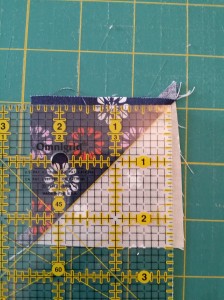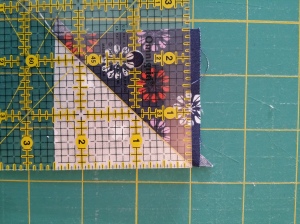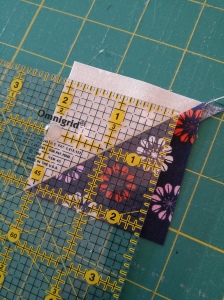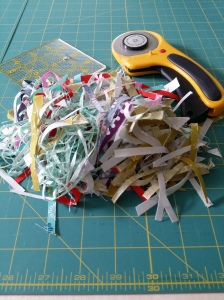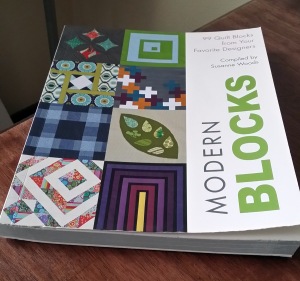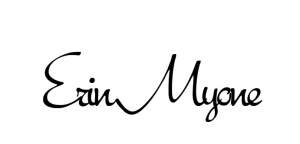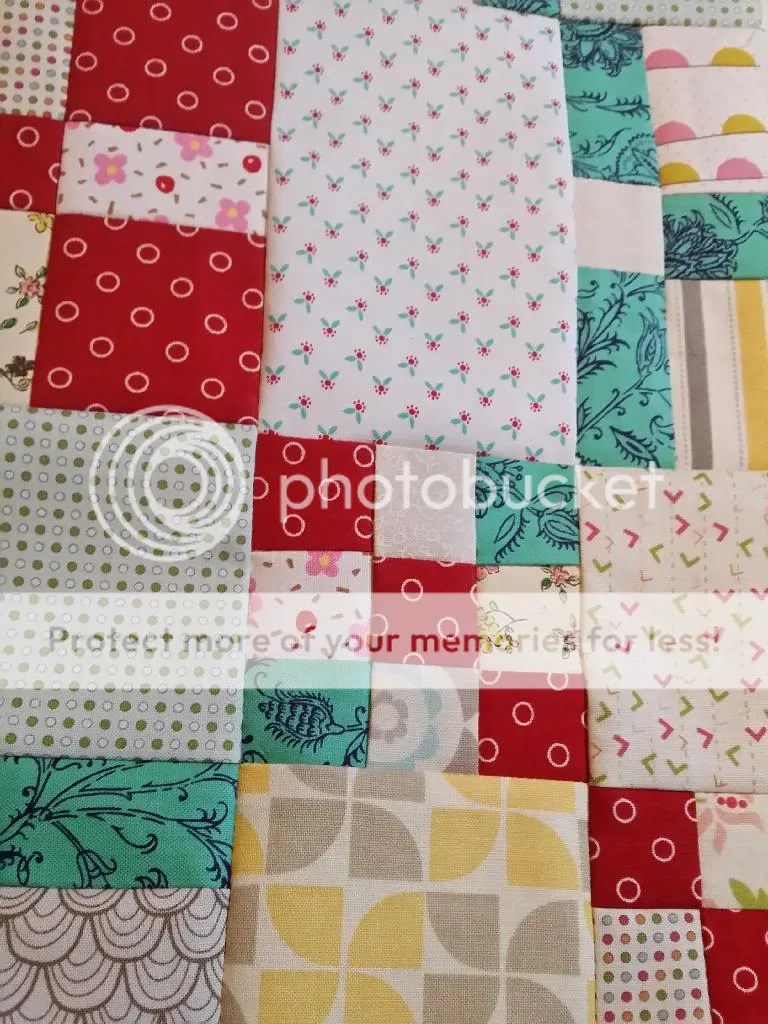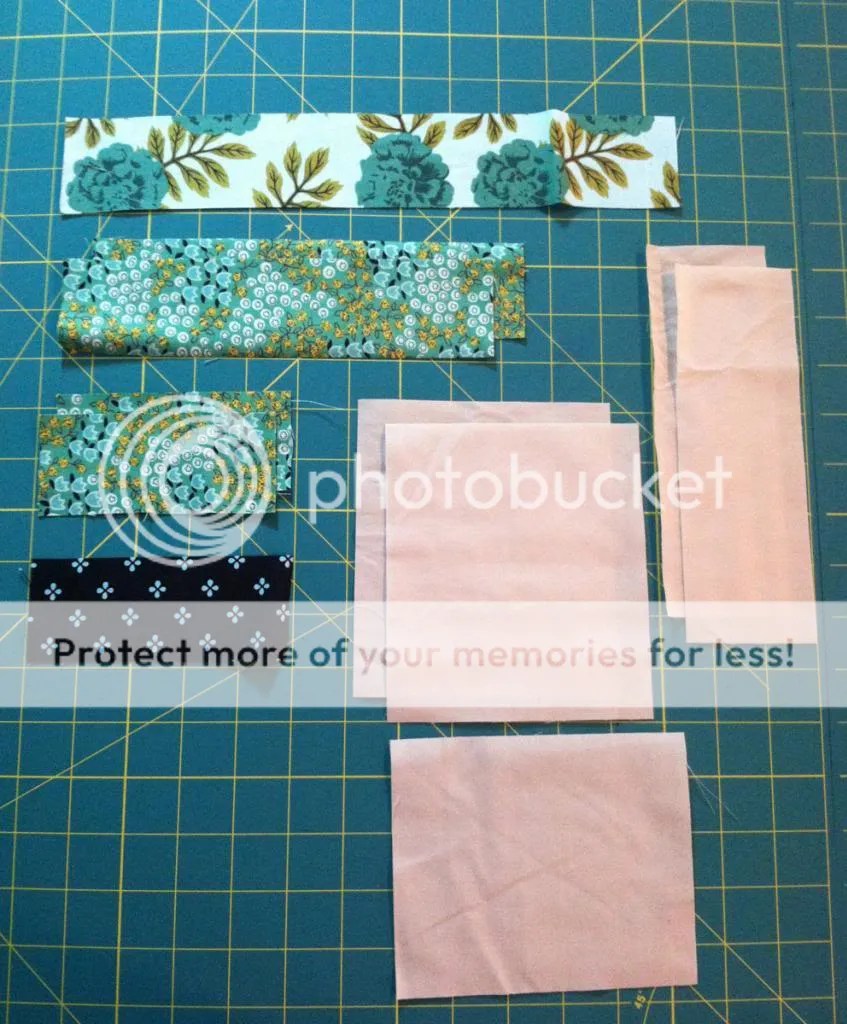
I know it’s been a while since my last post, but that story is for a different post all-together. Today, I want to tell you all about the American Patchwork & Quilting Magazine’s Tone it Down quilt along. Below, I have shared an image of the Tone it Down quilt designed by Lissa Alexander of Moda Lissa.
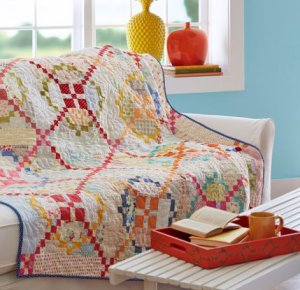
So here’s MY backstory on this project… I follow a number of quilter bloggers using various methods of social media including Instagram (follow me @erinmyone), Bloglovin (find my feed to see who I follow, erinmyone), and Facebook. A few of the bloggers I follow are Camille Roskelley of Thimble Blossoms and Sherri McConnell of A Quilting Life. Little did I know that both of these ladies had been invited to participate in a very public quilt along, that is until Camille started posting about it back in November. The tricky thing about all of this was that the quilt is featured in the February 2014 issue of APQ, and you know, it was November! But because magazine world is kind of funny the issue went out on newsstands on December 3rd, for those of us who aren’t subscribers.
So I waited patiently, kind of, it was really hard to see Camille posting all kinds of beautiful photos on Instagram of her progress but not have the information available to get started myself. And then, I noticed that Sherri was also getting geared up to quilt, still a few days before the magazine was even available so I was getting a little anxious and itchy to start. But, I was starting to get an idea of what I wanted to do with my own quilt, since each of these ladies was putting a different spin on it.

However, one thing I hadn’t realized from their updates was that there are two versions of this quilt. The first version, the original designed by Lissa that is, is the Super Scrappy Block Variation. The second is the more prominent method described in the magazine, a strip pieced method that saves some time in the cutting and piecing stages by minimizing the background variation within the individual blocks. I honestly couldn’t help myself… This quilt is the type of quilt you will keep forever and hand down in the family, I want it to be amazing and special, I want it to hold your attention as your eyes scan through the many variations of fabric within the blocks, I want it to take a long while so that it is worthy to last a long while… I chose to do the Super Scrappy Variation.

To really make the super scrappy variation, well, scrappy, I decided to cut all of my fabrics before I begin so that I can achieve a good variation in all of the blocks. Now, because I am working with assorted low volume prints for the background, all I really need to know are how many pieces of each size to cut, not how many pieces of each size for each print to cut. So I started doing some math, for the full size quilt there are 20 blocks, without giving away too much information this means from the Low Volume Prints, I need 80 pieces of cut A, 160 pieces of cut B, 240 pieces of cut C, and 560 pieces of cut D, and 49 pieces of sashing. These numbers are for the entire quilt, in the magazine they list what you will need for a single block, but because I want an even distribution of my low volume prints across the entire quilt, I needed to know what to cut in advance for the whole quilt. Also, because it’s a scrappy variation, I can use different proportions of the different prints, so if I love a fabric I might cut a lot more of it than a fabric that I am less fond of. But how was I ever going to keep track of all of those pieces?

I created a cut sheet, the document I prepared is strictly for the Super Scrappy Variation and allows me to just highlight or mark through the pieces as I went, tracking my cutting progress. I shared a photo of my cut sheet on Instagram and have had a request for a copy of the document.

As much as I would love to share this cut sheet openly with everyone, I know that some of us are brilliant at reverse engineering a quilt, so that we can whip it up without purchasing a pattern. I know knitters who do it, crocheters who do it, and quilters who do it. I’ve even done it myself, but then my conscience kicked in and I remembered that somewhere out there a designer put in some time to figure this out, prepare it for publication, and put their name on the line to risk the sometimes expensive publication fees, so I went ahead and bought the pattern anyway and considered my momentary slip as practice for my own quilt design skills (truly I did.) I don’t want to live and try to work (as a designer/artist) in a world where we are all comfortable with skimming someone else’s work, and unfortunately our desire for an open online community sharing and pinning away we often make it that much easier to take someone’s work without paying any contribution for their efforts…
With that said, I would be glad to share this cut sheet with any of you who have already purchased the magazine (or if you haven’t yet you can purchase a digital copy here.) How will I know if you have purchased the magazine? Well my request is that you share a picture of your progress on the quilt so far. Maybe that is just a photo of the magazine, a stack of fabrics waiting to be cut, a bunch of tiny pieces already cut, or maybe even a finished block or two! Just share your image in my Linky Library here, this link will take you to another website but you will be directed back here, don’t worry! Or direct me to your flickr, or instragram posts in a comment below!

One last tip!!! For the bright prints you actually only need a 9×9.5″ cut of fabric. So if you want to cut down on expenses, share a quarter of a yard with a friend or two, or three, or four! OR reduce the number of prints you will use and cut multiple blocks worth of bright prints from a quarter yard and simply space your blocks pleasingly across the entire quilt.
Don’t forget to check out the other quilter’s progress on Flickr or Instagram, and don’t forget to tag your photos with #APQQuiltalong so everyone else can keep up with you too!
And check out the quilt along hosts and bloggers progress at these links below!

